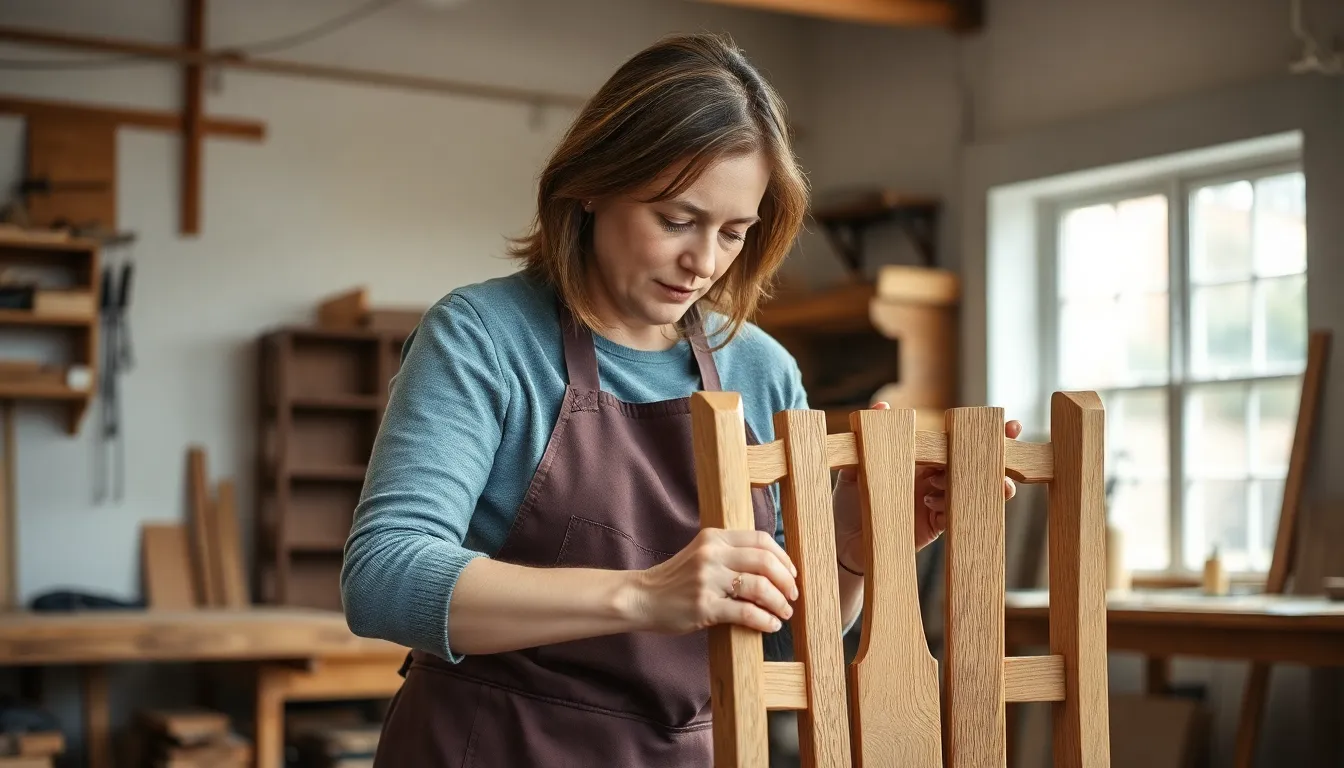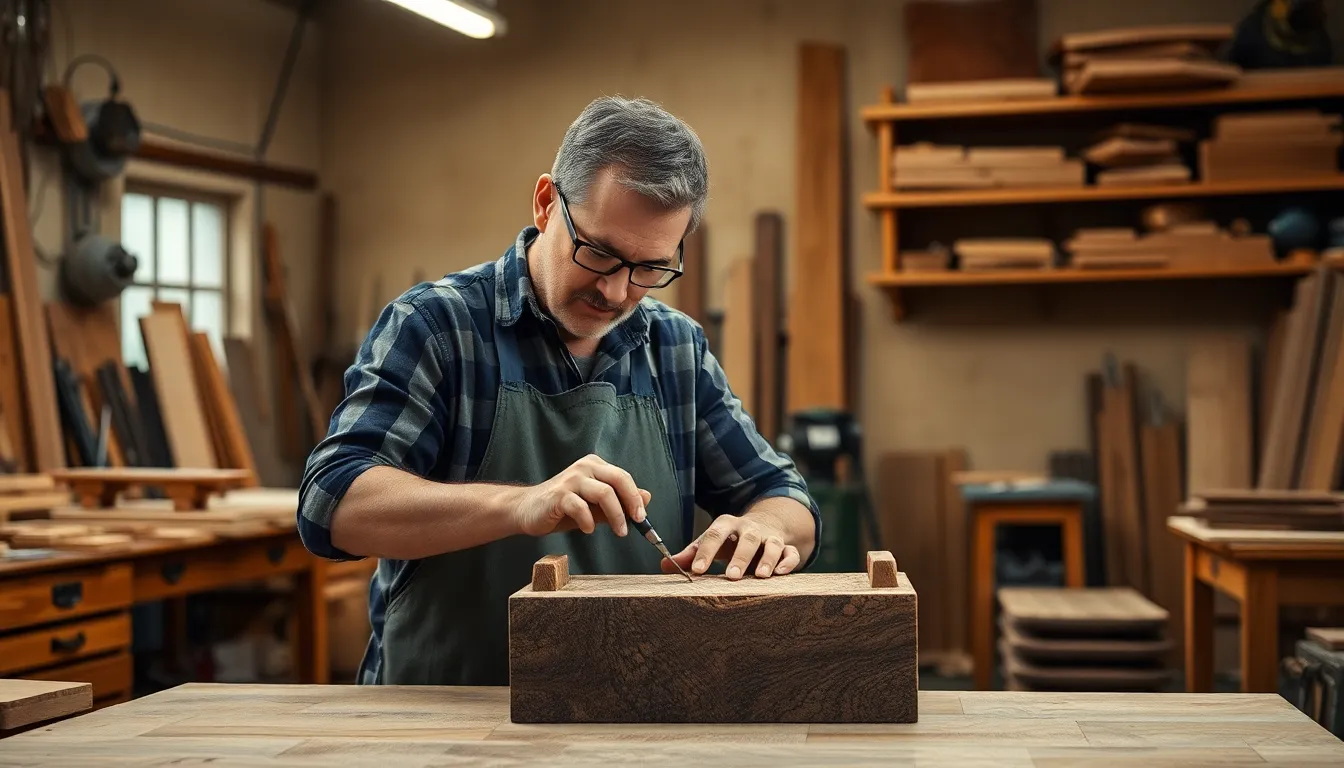Table of Contents
ToggleIn a world overflowing with cookie-cutter solutions, bespoke design stands out like a unicorn at a dog park. It’s not just about creating something unique; it’s about crafting an experience that reflects individual taste and personality. Whether it’s a tailored suit that fits like a glove or an interior space that feels like a warm hug, bespoke design transforms the ordinary into the extraordinary.
Imagine walking into a room and feeling like it was made just for you—because it was! Bespoke design takes the time to understand needs and desires, resulting in creations that are as functional as they are fabulous. So, if you’re tired of blending in with the crowd, it’s time to embrace the art of bespoke. Let’s dive into the wonderful world of personalized design that’s just waiting to make your dreams a reality.
What Is Bespoke Design?
Bespoke design focuses on creating customized solutions tailored to individual preferences. This approach emphasizes personalization and distinctiveness in various fields such as fashion, architecture, and product design.
Definition and Key Characteristics
Bespoke design refers to tailoring products to meet specific client needs. Customization features are prominent, accommodating unique requirements in materials, styles, and dimensions. Attention to detail marks bespoke design, ensuring each piece reflects its owner’s personality. Quality craftsmanship often characterizes bespoke items, enhancing their appeal and longevity. Personal interaction plays a significant role, allowing designers to build relationships with clients. This collaboration leads to creations that resonate deeply with users.
Differences from Standard Design
Standard design typically follows a one-size-fits-all approach, contrasting with the personalized nature of bespoke design. Mass-produced items lack the individuality found in bespoke offerings. Standard designs prioritize efficiency and cost-effectiveness, while bespoke pieces emphasize exclusivity and craftsmanship. In terms of customer involvement, bespoke design fosters collaboration between client and designer, differing from the limited feedback in standard design processes. Customization possibilities in bespoke design create opportunities for unique solutions unattainable through standard methods.
The Benefits of Bespoke Design


Bespoke design offers unique advantages that cater specifically to individual preferences. These benefits transform ordinary experiences into personalized masterpieces.
Tailored Solutions for Individual Needs
Bespoke design delivers tailored solutions, aligning perfectly with client needs and desires. Clients express their preferences, influencing every aspect of the design process. Designers incorporate input, ensuring the final product resonates deeply with the individual. Customization enables the creation of functional pieces that enhance everyday life. Examples include tailored suits that fit impeccably or furniture designed for specific spaces. Ultimately, bespoke design fosters uniqueness that off-the-shelf items cannot achieve.
Enhanced Quality and Craftsmanship
Quality and craftsmanship elevate bespoke design above standard practices. Attention to detail defines the production process, ensuring superior materials and techniques enhance durability. Expert artisans contribute their skills, producing works that reflect dedication and precision. This commitment often leads to longer-lasting items, reducing the need for replacements. Clients appreciate the story behind each piece, as it embodies the careful consideration taken throughout its creation. Enhanced quality creates a tangible connection between the client and the designer, showcasing the true essence of bespoke craftsmanship.
The Process of Creating Bespoke Designs
Creating bespoke designs involves a meticulous process that emphasizes individuality and personalization. Each step is crucial for ensuring that the final product reflects the client’s vision.
Initial Consultation and Requirements Gathering
During the initial consultation, designers engage clients to understand their specific needs and preferences. This interaction establishes a foundation for collaboration. Clients express their ideas, inspirations, and functional requirements. Designers take notes, asking clarifying questions to capture every detail. This phase is essential for identifying aesthetics, materials, and overall goals. A thorough understanding of the client’s vision allows designers to create tailored solutions that truly resonate.
Design Development and Prototyping
Following the consultation, the design development phase begins. Designers translate ideas into visual concepts through sketches or digital renderings. These representations help clients visualize the proposed solution. Iterations occur based on client feedback, refining details and ensuring alignment with expectations. Prototyping is an integral part of this phase, allowing clients to interact with a tangible version of the design. Adjustments made during prototyping enhance functionality and aesthetic appeal, ensuring that the final product meets the highest standards of bespoke craftsmanship.
Examples of Bespoke Design Applications
Bespoke design manifests in various fields, showcasing its flexibility and creativity in meeting unique client needs.
Interior Design
Interior design embodies bespoke creativity, crafting environments that reflect individual lifestyles and preferences. Custom cabinetry and personalized color schemes transform living spaces into tailored havens. Design professionals create layouts that optimize functionality while enhancing aesthetics. Collaboration between clients and designers leads to unique furnishings that capture personal style. Each choice in materials and finishes articulates a specific vision, ensuring every element aligns with client desires. Unique details, such as custom lighting or bespoke artwork, elevate the overall ambiance, resulting in cohesive and personalized spaces.
Fashion and Apparel
Fashion becomes an art form when bespoke design enters the picture, offering clothing that showcases personal style and individual flair. Tailored suits, dresses, and casual wear emphasize fit, ensuring comfort and elegance in every piece. Clients provide input on fabrics, patterns, and details, allowing for garments that resonate with their identities. Skilled artisans utilize traditional techniques to create unique pieces that stand the test of time. Bespoke fashion makes a statement through exclusivity, presenting items that showcase unique design while honoring personal preferences. Custom accessories complete any outfit, enhancing the overall look with individual touches.
Product Design
Product design benefits significantly from bespoke approaches, enabling the creation of items tailored to specific functional and aesthetic needs. Technology integration allows for customized gadgets that suit individual lifestyles, enhancing usability and efficiency. Designers prioritize the needs of clients, ensuring that every feature enhances user experience. Personalized products resonate more with consumers, creating stronger emotional connections. Additionally, sustainable materials can be incorporated, reflecting a commitment to eco-friendly practices. Each bespoke item represents a thoughtful response to user demands, merging practicality with unique style.
Bespoke design stands as a testament to individuality and creativity. It empowers clients to express their unique tastes while ensuring that every piece is crafted with precision and care. By prioritizing personal interaction and collaboration, bespoke design fosters relationships that elevate the creative process.
Whether in fashion, architecture, or product design, the commitment to quality and craftsmanship shines through in every custom creation. Embracing bespoke design not only results in extraordinary items but also enhances everyday experiences, making them truly one-of-a-kind. This approach encourages everyone to dream big and transform those dreams into reality.




